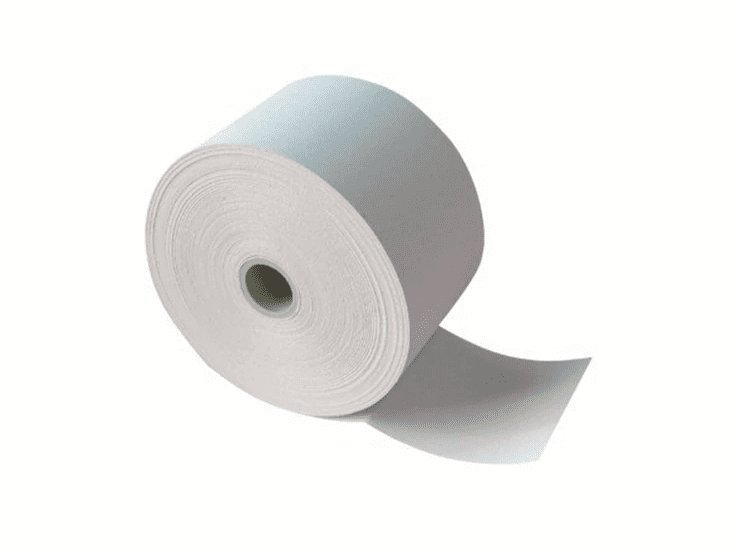Is Your Thermal Label Printer Paper? Here’s How to Check
Thermal label printer paper is an essential component for businesses that rely on efficient and high-quality printing for receipts, shipping labels, or product tags.

Thermal label printer paper is an essential component for businesses that rely on efficient and high-quality printing for receipts, shipping labels, or product tags. Unlike regular paper, thermal paper has a unique coating that reacts to heat, eliminating the need for ink or toner. However, not all paper used in thermal printers is the same, and ensuring that you’re using the correct type is vital for optimal performance. This guide will help you determine if your paper is truly thermal and compatible with your thermal label printer.
What Is Thermal Label Printer Paper?
Thermal label printer paper is specifically designed for thermal printing technology. It has a heat-sensitive coating that darkens when exposed to the printer’s heated printhead, creating clear and sharp images or text. This type of paper is widely used in industries such as retail, logistics, and healthcare due to its reliability and cost-effectiveness.
There are two main types of thermal paper:
-
Direct Thermal Paper: Used for applications where labels have a shorter lifespan, such as shipping labels and receipts.
-
Thermal Transfer Paper: Requires a ribbon and is ideal for more durable prints like barcode labels or product tags.
Why It’s Important to Use the Right Thermal Paper
Using the correct thermal label printer paper ensures:
-
High Print Quality: Clear and legible text or images.
-
Printer Longevity: Prevents damage to the printer’s thermal printhead.
-
Cost Efficiency: Reduces the need for reprints and maintenance.
-
Customer Satisfaction: Professional and durable labels enhance your business reputation.
How to Check If Your Paper Is Thermal Label Printer Paper
If you’re unsure whether your paper is thermal, here are some practical methods to verify:
-
The Scratch Test Take a piece of the paper and lightly scratch its surface with a coin or your fingernail. Thermal paper will produce a black mark where it’s scratched due to the heat generated by friction. If no mark appears, the paper is not thermal.
-
Heat Test Hold the paper near a heat source, such as a lighter (without igniting it). Thermal paper will darken in the heated area. Be cautious not to burn the paper during this test.
-
Inspect the Coating Thermal label printer paper typically has a smooth and glossy finish on one side. Regular paper, on the other hand, feels rougher and lacks this coating. Run your fingers across the surface to detect any differences.
-
Look for Manufacturer’s Information Check the packaging or label for details such as “Thermal Paper” or “Heat-Sensitive.” Reputable brands often specify whether the paper is designed for thermal printers.
-
Print Compatibility Test Load the paper into your thermal label printer and run a test print. If the printer produces clear and sharp text or images without the need for ink or toner, the paper is thermal. If the print quality is poor or blank, it might not be compatible.
Common Issues with Incorrect Paper
Using non-thermal paper in a thermal printer can lead to several problems, including:
-
Blank Prints: The printer will not produce any output as the paper lacks the heat-sensitive coating.
-
Printhead Damage: Non-thermal paper can wear down the printhead over time, leading to costly repairs.
-
Increased Costs: Replacing incompatible paper frequently can result in unnecessary expenses.
Tips for Choosing the Best Thermal Label Printer Paper
To avoid these issues, follow these tips when selecting your thermal paper:
-
Know Your Printer Type Confirm whether your printer uses direct thermal or thermal transfer technology and choose the paper accordingly.
-
Choose Trusted Brands Opt for reputable manufacturers that specialize in thermal paper. These brands often guarantee compatibility and quality.
-
Check for BPA-Free Options Many thermal papers contain BPA (Bisphenol A), a chemical that raises health and environmental concerns. BPA-free thermal paper is a safer and more sustainable choice.
-
Consider Your Application Match the paper type to your application’s requirements. For example, direct thermal paper works well for short-term labels, while thermal transfer paper is ideal for long-lasting prints.
-
Buy in Bulk Purchasing in bulk from a reliable supplier can save costs and ensure you always have the correct paper on hand.
Caring for Your Thermal Label Printer Paper
Proper storage and handling of thermal paper are crucial to maintaining its quality:
-
Store in a Cool, Dry Place: Excessive heat or humidity can damage the paper’s coating.
-
Avoid Direct Sunlight: Prolonged exposure to sunlight can cause fading or discoloration.
-
Keep Away from Oils and Chemicals: These substances can interfere with the paper’s heat-sensitive properties.
Conclusion
Ensuring that you’re using genuine thermal label printer paper is critical for achieving high-quality prints and prolonging the life of your printer. Simple tests like the scratch test, heat test, and inspection can quickly confirm whether your paper is thermal. Additionally, investing in the right type of thermal paper tailored to your printer and application will enhance your business’s efficiency and professionalism. By following the tips outlined above, you can confidently select and care for thermal paper that meets your needs.
What's Your Reaction?










